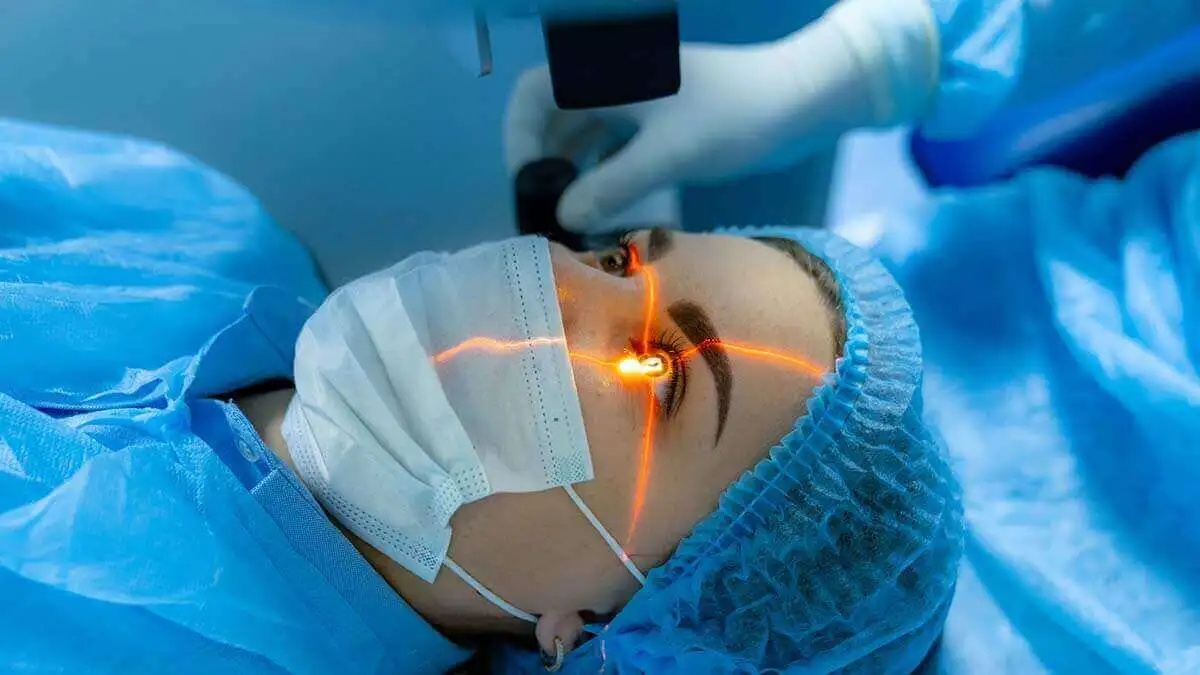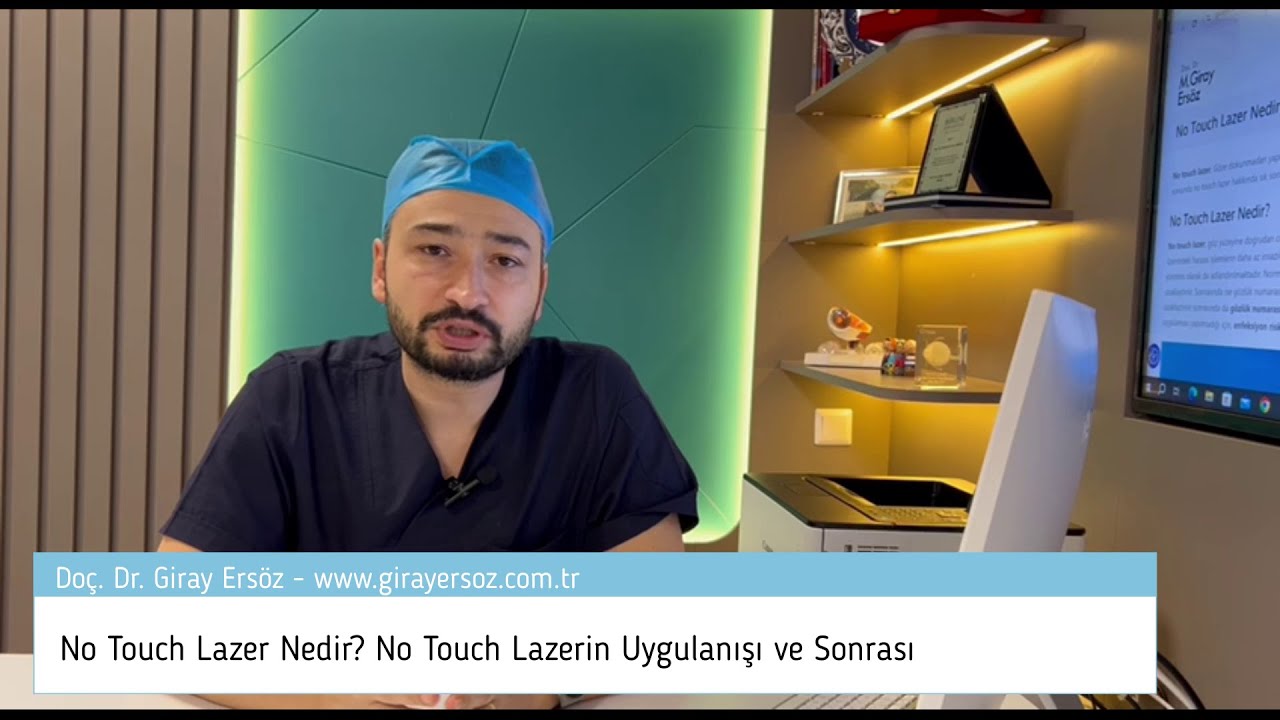No-touch laser is a type of laser treatment that is performed without making direct contact with the surface of the eye. In this article, I will explain in detail what no-touch laser is and address some frequently asked questions at the end.
What is No-Touch Laser?
No-touch laser is a laser technique that avoids physical contact with the eye, allowing for more delicate and minimally invasive procedures on the cornea. It is essentially a variant of the PRK (photorefractive keratectomy) method, often referred to as trans-PRK. Unlike the traditional PRK method, where the epithelial layer of the cornea is manually scraped or removed using alcohol, no-touch laser uses a laser to remove the epithelial tissue. Afterward, the excimer laser is applied to correct the refractive error. This method eliminates the need for scraping or alcohol, leading to a lower risk of infection and a faster healing process.
Which Patients Are Suitable for the No-Touch Laser Method?
The no-touch laser method can be applied to patients with the following conditions:
- Thin corneas (those with corneal thickness below a certain threshold)
- Mild to moderate myopia (nearsightedness) or hyperopia (farsightedness)
- Individuals with astigmatism
- Those who are dissatisfied with glasses or contact lenses
Who Should Avoid the No-Touch Laser Method?
The no-touch laser is not recommended for patients with the following conditions:
- A history of severe allergic eye diseases
- Existing corneal diseases or infections
- Pregnant or breastfeeding women
- Individuals with elevated intraocular pressure
For more details about glaucoma, you can read my article, “Understanding Glaucoma: Unveiling the Silent Threat to Vision.“
Risks of No-Touch Laser
Like any medical procedure, the no-touch laser method carries certain risks, including:
- Infection
- Vision loss
- Temporary or permanent blurred vision
- Dry eyes
- Surface irregularities on the eye
Advantages of No-Touch Laser
The no-touch laser method offers several benefits:
- Reduced pain, as there is no scraping or alcohol applied to the eye’s surface
- Faster healing time
- Lower risk of infection
- Fewer potential complications
Disadvantages of No-Touch Laser Surgery
However, compared to other laser procedures like LASIK or SMILE, no-touch laser surgery has some drawbacks:
- May not be suitable for individuals with high prescriptions
- Pain during the first 3 days post-surgery
- Vision typically improves after about one week
Eye Conditions Treated with No-Touch Laser
No-touch laser is used to treat a variety of eye conditions, including:
- Thin Corneas: This method is ideal for individuals with a thin cornea, as it minimizes damage to the cornea.
- Mild to Moderate Myopia: For patients with lower levels of myopia, this method offers a less invasive approach.
- Low to Moderate Astigmatism: No-touch laser can provide precise correction for astigmatism.
How is No-Touch Laser Applied?
The no-touch laser procedure begins with a thorough eye examination. Once the eye is assessed, the precise area for laser application is determined using specialized optical devices. During the procedure, laser beams are directed onto the eye’s surface without any physical contact. The no-touch laser removes the corneal epithelial layer, after which the excimer laser is applied to reduce the eyeglass prescription.

Healing Process After No-Touch Laser Surgery
The recovery process following no-touch laser surgery is faster compared to traditional PRK. Most patients are able to resume normal activities within 3 days. However, some discomfort may persist for the first 3 days. Vision typically starts to improve after 5-7 days, but complete recovery and full clarity can take several weeks.
Post-Surgery Care and Considerations
- Wear sunglasses to shield your eyes from sunlight
- Use prescribed eye drops regularly
- Refrain from rubbing or scratching your eyes
Possible Side Effects After No-Touch Laser Surgery
- Temporary Near Vision Impairment: Some patients may experience difficulty seeing at a distance in the initial recovery phase.
- Blurred Vision: It is common to have blurry vision in the first few days, but this usually improves within a week.
- Pain: Mild discomfort may occur during the first 3 days, which can typically be managed with medication.
- Temporary Astigmatism: Some individuals may experience a temporary increase in astigmatism, which generally resolves within 3-4 weeks.
- Dry Eyes: Dryness may occur after surgery and can usually be treated with lubricating eye drops. For more information on dry eyes, you can read my article: “What is Dry Eye? Tips for Protection.“
- Double Vision: Double vision is a temporary side effect that can occur early in the recovery period.
Cost of No-Touch Laser Surgery
The price of no-touch laser surgery can vary based on factors such as the patient’s eye health, the specific techniques used, and the location of the medical facility.
Here are the answers to some common questions about no-touch laser surgery:
Frequently Asked Questions
Yes, it is highly recommended to wear sunglasses, especially during the first year, to protect your eyes from harmful sun rays after the procedure.
No-touch laser is a type of excimer laser. The key difference is that in the no-touch laser procedure, the epithelial tissue of the cornea is completely removed by laser without any physical contact with the eye.
It is advisable to avoid screen time for a few days post-surgery. However, some patients may use their phones briefly if they don’t experience discomfort.
After the procedure, contact lenses are placed in the eyes for 3 days, after which they are removed by the doctor.
Typically, one session of no-touch laser surgery is sufficient. However, some patients may require re-treatment, depending on their eye condition and how they respond to the initial treatment.
While side effects are possible, they are generally mild and temporary. Keep in mind that the long-term effects can vary for each individual.
No-touch laser is suitable for prescriptions ranging from -10 diopters for myopia to +4 diopters for hyperopia, along with up to 4 degrees of astigmatism. However, in cases of myopia above 6-8 degrees, other laser options may be considered.
Generally, eye prescriptions are permanently corrected with no-touch laser surgery. However, changes may occur over time due to age.
It is advised to refrain from driving for 24-72 hours after the surgery while your eyes heal.
Recovery time depends on the type of work. Typically, office workers can return to work within 3-4 days.
Yes, no-touch laser can usually be performed on both eyes simultaneously, but this depends on the patient’s condition and the doctor’s advice.









